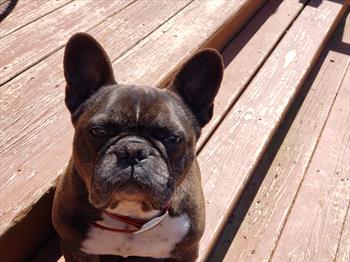Introduction
Dogs are living longer these days than ever before due to advanced veterinary care and better nutrition. However, as they get older, age-related diseases such as arthritis, dental disease, diabetes, Cushing’s disease, thyroid disease, cancer, and decreases in vision and hearing can all result in subtle or more obvious behavioral changes in dogs. These changes can include decreased activity, loss of appetite, and even aggression.
What about Canine Cognitive Dysfunction Syndrome (CCDS)?
Similar to Alzheimer’s disease in humans, another disease to consider in older dogs is canine cognitive dysfunction syndrome (CCDS). This disease affects the brain, causing behavioral changes such as disorientation, decreased social interactions, vocalization, increased restlessness at night, house soiling, anxiety, irritability, and, in some cases, agitation. We may think of cognitive decline as an “old dog” disease, but clinical signs can start to emerge as early as 5 years of age in some dogs, especially larger breeds.
Clinical Signs of CCDS
D: Disorientation
I: Changes in social interaction
S: Changes in sleep-wake
H: House soiling
A: Changes in activity level and anxiety
Determining the Cause
When determining the cause for behavioral changes in older dogs, we must first rule out underlying medical diseases with lab tests such as a complete blood count, serum chemistry, thyroid profile, and urinalysis. Diagnostics such as radiographs can show signs of arthritis or certain types of cancers. Specific exams to look at teeth, eyes, and even the nervous system can also help narrow down the cause. Cognitive disease is often diagnosed based on behavioral signs alone once other medical causes have been ruled out.
Treatment
The goal for these dogs is to improve their welfare rather than to cure. Pain is often a common factor resulting in decreased activity, increased anxiety, restlessness, and in some cases even aggression. Anti-inflammatories (NSAIDs) and other pain medications often improve the dog’s comfort level and subsequent quality of life. Behavioral supplements, pheromones, prescription diets, and anti-anxiety medications may also be helpful.
In addition to medications, enrichment using interactive food dispensing or puzzle toys can provide mental stimulation, sharpen problem-solving skills, and exercise the brain. Using a variety of new smells hidden around the house or in the yard often stimulates interest and physical activity.
Positive reinforcement training is another form of enrichment for older dogs, can be used when teaching new tricks or playing memory games. This training helps to sharpen your dog’s memory while providing positive human interactions. Many of these techniques can be just as mentally tiring as if you just took your final exam for chemistry. They can also help your dog sleep better at night and slow down the progression of canine cognitive dysfunction syndrome in some dogs.
Senior dog. Photo courtesy of Christine Calder, DVM, DACVB (veterinary behaviorist)

Photo courtesy of Christine Calder, DVM, DACVB
If you are observing behavior changes in your older dog, a trip to the veterinarian is encouraged. What you are seeing may not just be your dog slowing down. There may be more to the picture than meets the eye or assuming that’s the way it goes; you may be able to significantly enhance your dog’s quality of life in their senior years.